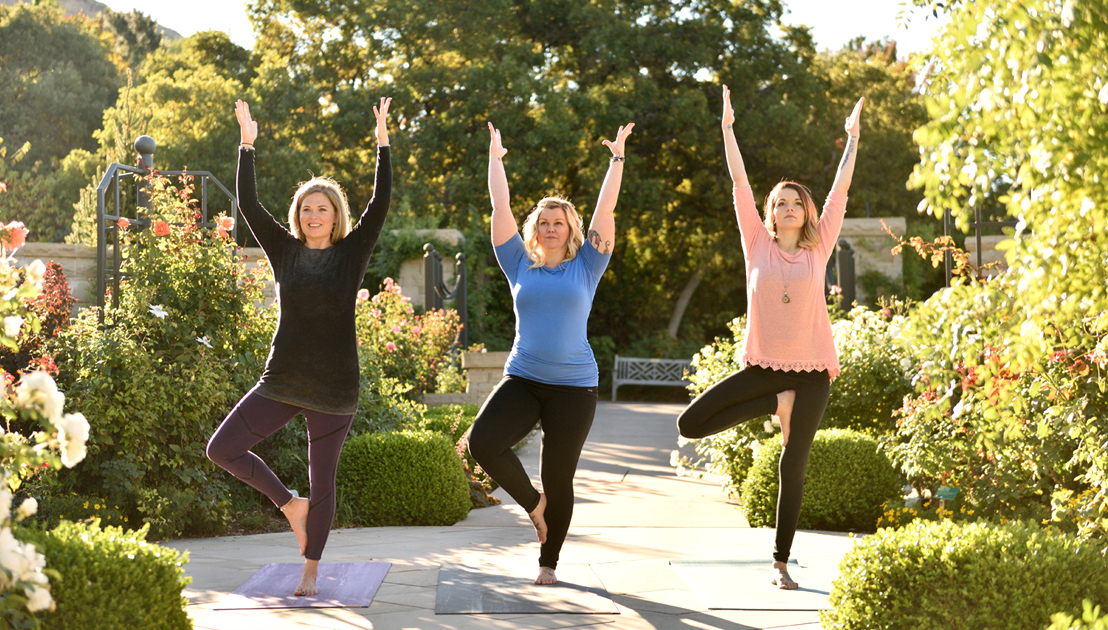
A number of years ago, I sprained my ankle on a walnut. Seriously. One day while I was working in my front yard, I accidentally stepped on an English walnut that had fallen from my next-door neighbor’s tree, causing my ankle to twist.
It was not the first time I had sprained the same ankle. My first left ankle sprain occurred when I was practicing handsprings in high school. I fell on the ankle when it was in an inverted position and ended up on crutches for a week. The ankle was never the same. It has remained more vulnerable to injury ever since.
When we sprain our ankles, we pull ligaments. Because ligaments are made mostly of collagen, they do not receive much, if any, blood flow. Once they have been pulled to a new length, they don’t spring back. They remain at a longer length, making them less able to perform their function, which is to limit the movement of the joint.
Sprains are most often the result of ankle inversion, when the ankle collapses in the direction of the outer side of the foot. Ankle eversion, when the ankle collapses toward the inner arch, happens less often. This is at least partly due to the fact that the ligaments on the outer ankles are much smaller and more delicate than those of the inner sides. Because of this, when we invert the ankles, it’s likely to cause more ligament damage than when we evert them.
Ankle Strengthening Yoga Poses
Even though our ligaments may never return to their original length, we can still strengthen the muscles of the feet and ankles. Strengthening the surrounding tissues helps us avoid reinjuring our ankles.
There are many ankle strengthening yoga poses. Here are a few types of poses that I’ve found especially helpful:
- Balancing Poses: When you balance on one foot, you’ve probably noticed that your feet and ankles wobble, even though you feel otherwise stable. That wobbling is doing two things. Balancing is a moment-to-moment process. The movements in your foot and ankle are the definition of balancing. Second, those movements are strengthening your feet and ankles as they improve proprioception. So, if you want to strengthen your feet and ankles, practice ankle strengthening poses such as Vrksasana (Tree Pose), Garudasana (Eagle Pose), and Hasta Padangusthasana (Hand-to-Big-Toe Pose).
- Standing Poses: Standing Poses in general can help strengthen your ankles. By practicing weight-bearing poses with your feet in a variety of positions, you can strengthen different parts of the ankles and feet. For example, the front foot in Trikonasana (Triangle Pose) is in plantar flexion, whereas the front foot in Virabhadrasana II (Warrior II Pose) is in simple flexion. In both cases, the feet are bearing weight, but the way they bear weight is different, so they are engaging different muscles in the feet and ankles. There’s a difference between the positioning of the front and back feet in standing poses as well. Standing poses help you develop flexibility and strength simultaneously. Practice a variety of standing poses for an all-around ankle-strengthening practice.
- Toe Tricks: There are 20 muscles that enable foot movement. When we move our toes, we engage not only the muscles of the foot, but those of the arches and even some muscles in the lower legs, including the calves. Try these movements:
- Lift just your big toes, making sure that the inner balls of the feet stay on the ground.
- Ground your big toes and lift the other four—without lifting the outer balls of the feet.
- Ground your big and little toes and lift the middle three toes.
- From there, ground your fourth toe, then your third toe, leaving just the second toe lifting.
- Lift just your little toes. (I can’t do this one, but I’ve seen others do it. It’s one of those tricks like wiggling your ears; either you’ve got it or you don’t.)
- Lift your big and little toes.
Know that these take practice, and even if your feet never cooperate completely, simply moving the toes yields benefits. When you practice the toe tricks, you can help your feet by using your fingers to press downward on the toes that should be on the ground while allowing the others to lift. While you practice the toe tricks, feel which muscles are engaging to help lift different toes.

Dear Charlotte,
Thank you very much for your inspiring and encouriging post. I sprained my ankle at ballet class, ening up with a seriously damaged cartilage. My time with crutches took 2,5 months and I still have pain from time to time. I am a yoga instructor myself and the past 6 months has been hell to me, since I was not allowed to practice anythin. I have been granted permission by my physician the other day and I am seeking yoga sequence for strengthenng my micro muscles at my ankles. I encountered your post and I cannot wait to go home and practice with the tips you have given.
Thank you.
Regards
Beril
I’m so sorry to hear about your injury. A badly sprained ankle can take such a long time to heal. I hope these poses help and that you continue to heal. Good luck!